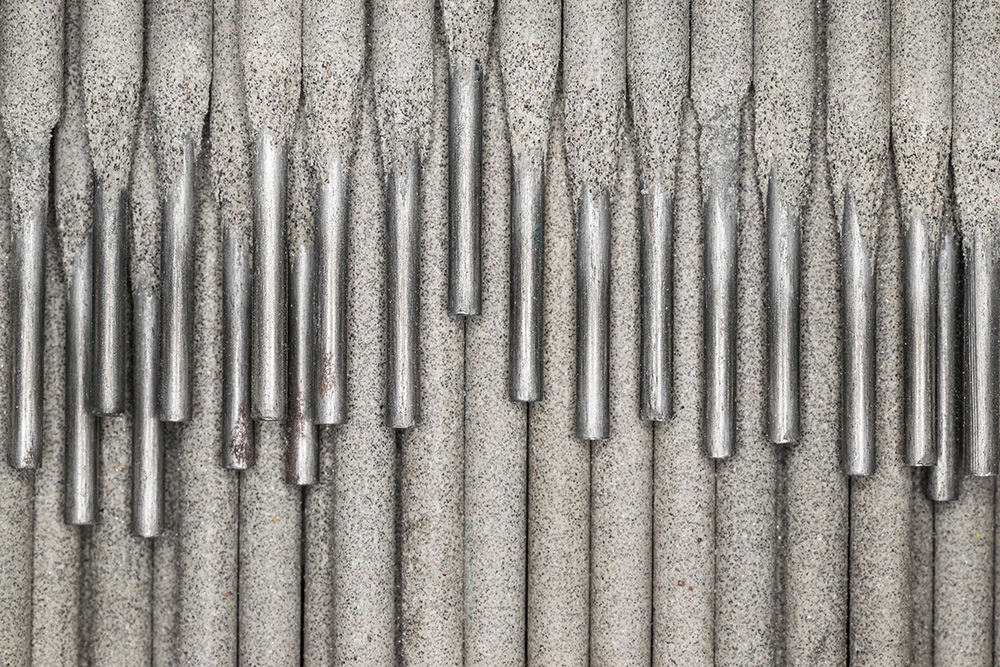Decoding Welding Rods

Have you ever wondered what the numbers on the carbon steel welding rods mean?
You will see welding rods with numbers like these:
E6011-1/8
E7018-3/16
The AWS classifications define welding rods to make them consistent across brands and easy for welders to identify.
Decoding the Digits
The last number (after the dash) is the easiest - it is simply the diameter of the welding rod without the flux.
The prefix "E" stands for arc welding Electrode.
First and Second Digit
After the prefix, The first two digits, 60 and 70, for example, represent the tensile strength of the welding rod in thousands of lbs per square inch. So, a 6011-1/8 has a finished tensile strength of 60 thousand lbs/square inch in the finished weld.
| 1st & 2nd Digit | Tensile Strength |
|---|---|
| xx | x 1000lbs |
| 60 | 60,000lbs |
| 70 | 70,000lbs |
Third Digit
The third digits describe the welding position the rod is suitable for: flat, horizontal, vertical down, and overhead.
| 3rd Digit | Welding Position |
|---|---|
| 1 | suitable for all welding positions. |
| 2 | flat and horizontal welding only. |
| 4 | flat, horizontal, vertical down, and overhead |
Fourth Digit
The fourth digit indicates coating type and current:
| 4th Digit | Coating | Welding Current |
|---|---|---|
| 0 | High cellulose sodium | DC+ |
| 1 | High cellulose potassium | AC, DC+, or DC- |
| 2 | High titania sodium | AC, DC- |
| 3 | High titania potassium | AC, DC+ |
| 4 | Iron powder, titania | AC, DC+, or DC- |
| 5 | Low hydrogen sodium | DC+ |
| 6 | Low hydrogen potassium | AC, DC+ |
| 7 | High iron oxide, potassium powder | AC, DC+, or DC- |
| 8 | Low hydrogen potassium, iron powder | AC, DC+, or DC- |
Some Common Rod Types
E6010 (SMAW)
- Electrode Type: All-position, mild steel electrode.
- Tensile Strength: Typically 60,000 psi.
- Coating Type: Cellulose-based.
- Characteristics: Provides deep penetration, often used for root passes in pipe welding. Suitable for welding in various positions, including vertical and overhead.
E6011 (SMAW)
- Electrode Type: All-position, mild steel electrode.
- Tensile Strength: Typically 60,000 psi.
- Coating Type: Cellulose-based.
- Characteristics: Provides good penetration and is suitable for welding in a wide range of positions. Often used in maintenance and repair welding.
E6013 (SMAW)
- Electrode Type: All-position, mild steel electrode.
- Tensile Strength: Typically 60,000 psi.
- Coating Type: Rutile-based.
- Characteristics: Easy to use, with good arc stability and smooth, clean welds. Suitable for general-purpose welding, including sheet metal and light fabrication.
E6018 (SMAW)
- Electrode Type: High-strength, mild steel electrode.
- Tensile Strength: Typically 60,000 psi or higher.
- Coating Type: Cellulose-based.
- Characteristics: Designed for applications where high strength is required. Suitable for welding various mild steel components.
E7010 (SMAW)
- Electrode Type: High-recovery, mild steel electrode.
- Tensile Strength: Typically 60,000 psi.
- Coating Type: Cellulose-based.
- Characteristics: Designed for use in severe conditions, with excellent arc stability and deep penetration. Often used for root passes in pipe welding.
E7014 (SMAW)
- Electrode Type: Iron powder, rutile-coated electrode.
- Tensile Strength: Typically 70,000 psi.
- Coating Type: Rutile and iron powder.
- Characteristics: Provides a balance of strength and ease of use. Offers good deposition rates and is suitable for both flat and horizontal positions in general fabrication.
E7018 (SMAW)
- Electrode Type: Low hydrogen, iron powder, high-strength electrode.
- Tensile Strength: Typically 70,000 psi.
- Coating Type: Basic.
- Characteristics: Known for its excellent weld quality, low hydrogen content, and strong mechanical properties. Suitable for welding in all positions, particularly for structural and heavy fabrication.